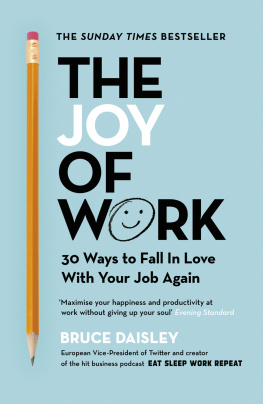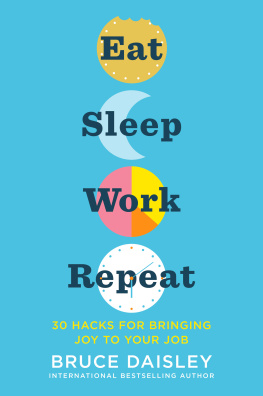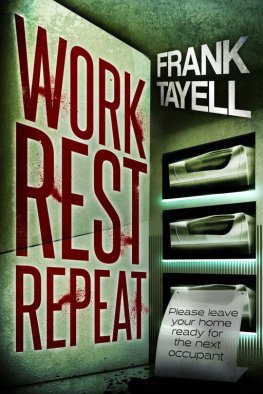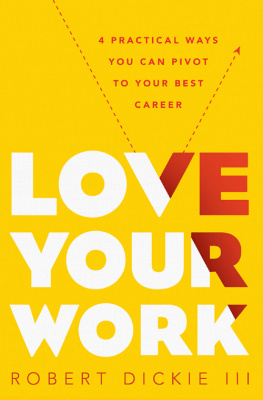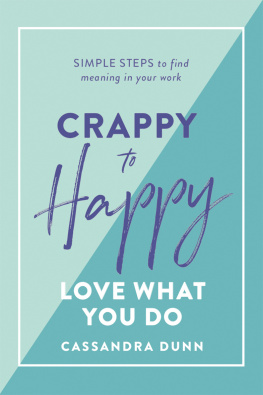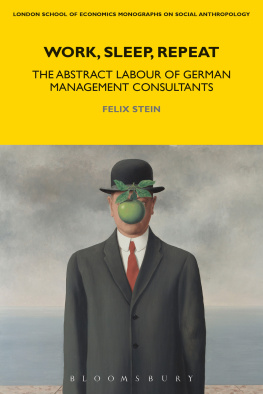Bruce Daisley - The Joy of Work: 30 Ways to Fix Your Work Culture and Fall in Love With Your Job Again
Here you can read online Bruce Daisley - The Joy of Work: 30 Ways to Fix Your Work Culture and Fall in Love With Your Job Again full text of the book (entire story) in english for free. Download pdf and epub, get meaning, cover and reviews about this ebook. year: 2019, publisher: Random House, genre: Detective and thriller. Description of the work, (preface) as well as reviews are available. Best literature library LitArk.com created for fans of good reading and offers a wide selection of genres:
Romance novel
Science fiction
Adventure
Detective
Science
History
Home and family
Prose
Art
Politics
Computer
Non-fiction
Religion
Business
Children
Humor
Choose a favorite category and find really read worthwhile books. Enjoy immersion in the world of imagination, feel the emotions of the characters or learn something new for yourself, make an fascinating discovery.
- Book:The Joy of Work: 30 Ways to Fix Your Work Culture and Fall in Love With Your Job Again
- Author:
- Publisher:Random House
- Genre:
- Year:2019
- Rating:5 / 5
- Favourites:Add to favourites
- Your mark:
The Joy of Work: 30 Ways to Fix Your Work Culture and Fall in Love With Your Job Again: summary, description and annotation
We offer to read an annotation, description, summary or preface (depends on what the author of the book "The Joy of Work: 30 Ways to Fix Your Work Culture and Fall in Love With Your Job Again" wrote himself). If you haven't found the necessary information about the book — write in the comments, we will try to find it.
__________________________
Bruce Daisley is on a mission to change the world of work.The Times
__________________________
From the creator of hit podcast Eat Sleep Work Repeat comes a revolutionary re-envisioning of how to enjoy your job.
Do you want to get more done, feel less stressed and love your job again?
Sometimes having a job can feel like hard work. But between Monk Mode mornings, silent meetings and crisp Thursdays, the solutions are at your fingertips.
Bruce Daisley knows a thing or two about the workplace. In the course of a career that has taken him from some of the worlds biggest media companies to Twitter, via Google and YouTube, he has become a leading expert on how we work now. And in his hugely popular podcast Eat Sleep Work Repeat, he has explored ways to fix it. Now he shares 30 brilliant and refreshingly simple tips on how to make your job more productive, more rewarding and much, much more enjoyable.
With just 30 changes, you can transform your work experience from bland and boring (or worse) to fulfilling, fun, and even joyful. Daniel Pink, author of When and Drive
__________________________
This is a warm, wise and funny book which provides a terrific summary of some of the science - and stories - behind what makes work a positive part of peoples lives. From the importance of lunch to the value of laughter, this book gives witty and practical advice. I loved it and Ive already started changing some of the things I do at work, as a result! - Professor Sophie Scott
Dont quit yet! In this book, Bruce shares remarkable advice that may well have you laughing while you work and truly loving your job. - Biz Stone, Twitter co-founder
Bruce Daisleys The Joy of Work is a joy to read. It translates the best of workplace psychology research into practical ways of establishing creative and liveable cultures at worka must read for all of us 9-5ers! - Professor Sir Cary Cooper, ALLIANCE Manchester Business School, University of Manchester
Bruces The Joy of Work is an important reminder of simple everyday practices to improve how we all work together, which will lead to greater team and individual happiness and performance. Great results will follow. - Jack Dorsey, CEO of Twitter and Square
With just 30 changes, you can transform your work experience from bland and boring (or worse) to fulfilling, fun, and even joyful. Bruce Daisley has pulled together threads of research and woven them into a tapestry of strategies that actually work, and that dont depend on the CEOs sign-off for implementation. You can begin changing your work culture today at the individual, team, and organisational levels with these tactics that increase creativity, productivity, and satisfaction. - Daniel Pink, author of WHEN and DRIVE
Bruce Daisley: author's other books
Who wrote The Joy of Work: 30 Ways to Fix Your Work Culture and Fall in Love With Your Job Again? Find out the surname, the name of the author of the book and a list of all author's works by series.

